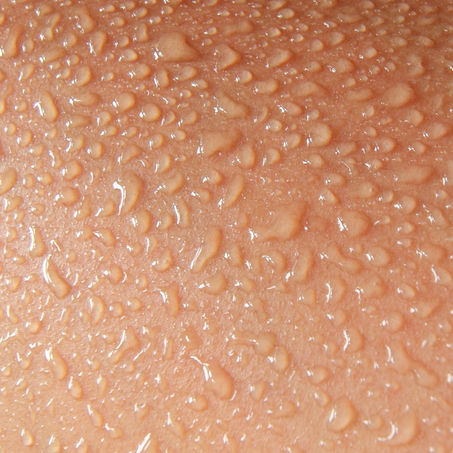
Sweat Management and Its Implications for Skin Health in Gloved Environments

Introduction
Sweating is a natural bodily function essential for regulating body temperature during high environmental temperatures or physical activity. However, in occupational settings where gloves are required, sweating can have unintended consequences on skin health due to the occlusion effect. This paper explores the mechanisms of sweat management within gloved environments, its impact on skin health, and the broader implications for workers in various industries.
Physiology of Sweating and Occlusion
Sweating helps regulate body temperature but can become problematic when gloves are worn for extended periods. Glove occlusion prevents the evaporation of sweat, trapping moisture against the skin. This creates a warm, moist environment conducive to several dermatological issues:
Skin Hydration and Barrier Function - Prolonged exposure to moisture causes swelling of the stratum corneum (the outermost layer of the skin), disrupting intercellular lipid barriers and leading to increased skin permeability. This disruption facilitates the separation of skin cells, weakening the skin's protective barrier.
Impacts of Sweaty Gloves
The inability to manage sweat effectively in gloved environments leads to several issues that compromise skin integrity and worker safety:
Low Dexterity - Sweat can cause gloves to adhere to the skin, reducing hand flexibility and impairing the ability to perform tasks requiring fine motor skills.
Hidden Skin Damage - The altered skin barrier due to occlusion increases the risk of irritant permeation, potentially leading to contact dermatitis. Notably, signs of skin damage such as roughness, redness, and peeling often do not appear until significant barrier impairment has occurred.
Bacterial Growth - The warm, moist conditions inside gloves can shift skin pH to more alkaline levels, promoting bacterial growth and increasing the risk of skin infections and unpleasant odors.
Uncomfortable Sensations - Discomfort from sweaty hands often compels workers to remove their gloves, exposing them to workplace hazards such as chemicals, sharp objects, and abrasive materials. This risk is particularly pronounced in older workers whose skin may be more susceptible to damage due to thinning.
Long-Term Consequences
Chronic issues associated with poor sweat management in gloved environments include:
Overhydration and Maceration - Extended glove wear during re-donning on sweaty hands can stretch the softened and swollen skin, leading to maceration.
Dry Skin and Eczema - Continuous exposure to a compromised barrier can lead to chronic dry skin and eczema, further reducing the mechanical protection offered by the skin.
Strategies for Effective Sweat Management
Material Choice - Selecting gloves made from breathable materials can help reduce the buildup of moisture.
Barrier Creams - Using barrier-enhancing creams can help protect the skin's integrity against moisture-induced damage.
Educational Programs - Training workers on the importance of proper glove selection and hand care routines can mitigate the risks associated with prolonged glove use.
Conclusion
Effective sweat management is crucial for maintaining skin health in environments where gloves are a necessary part of occupational safety. By understanding the physiological impacts of occlusion and implementing appropriate preventive measures, employers can safeguard their workers' health while ensuring their ability to perform tasks safely and effectively.
Reference
[1] Marty O. Visscher, Update on the Use of Topical Agents in Neonates, Newborn and Infant Nursing Reviews · March 2009.
[2] Hongbo Zhai and Howard I. Maibach, Occlusion vs. skin barrier function, Department of Dermatology, University of California, Skin Research and Technology 2002.
[3] Graves, C.J., Edwards, C. and Marks, R., “The effects of protective occlusive gloves on stratum corneum barrier properties”, Contact Dermatitis, 33, 1995, 183-187
[4] A. A. Hartmann, Effect of Occlusion on Resident Flora, Skin-Moisture and Skin-pH, Arch Dermatol Res 1983, 275:251 - 254
[5] Dorve W. Ramsing and Tove Agner, Effect of glove occlusion on human skin(Il)Long-term experimental exposure, contact dermatitis 1996. 34, 258-262.
[6] RAZA ALY et al, Effect of Prolonged Occlusion on the Microbial Flora, pH, Carbon Dioxide and Transepidermal Water Loss on Human Skin, the journal of investigative dermatology,1978.



